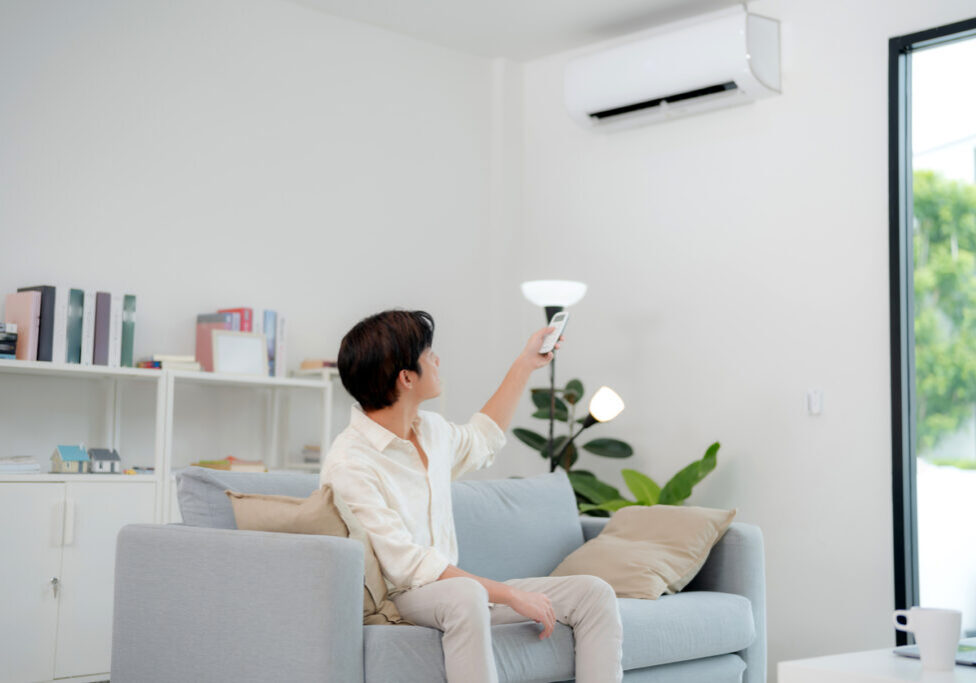Ductless Mini Split Systems and Indoor Air Quality: How They Can Help Those with Allergies

When it comes to managing allergies and improving air quality in your home, many people feel stuck between a rock and a hard place. Traditional HVAC systems often trap dust, pollen, and other allergens in ductwork, circulating them through our living spaces and causing discomfort for those with sensitivities. Luckily, ductless mini split systems are stepping up as a smarter alternative. These compact units not only filter out pollutants but also create efficient, customizable environments tailored to individual needs. With their ability to minimize contaminants and control humidity, they’ve become a game-changer for anyone looking to breathe easier at home. Let’s dive into how these systems can transform your indoor air quality and help you reclaim your comfort!
Ductless mini split systems help manage allergies by continuously filtering the air, reducing pollutants, and controlling humidity levels, which are essential for minimizing allergens like mold and dust mites. By eliminating the need for ductwork, these systems prevent the accumulation of allergens found in traditional HVAC systems, resulting in cleaner air and a more comfortable living environment for allergy sufferers.
Benefits of Ductless Mini Split Systems
One of the most appealing features of ductless mini split systems is their versatility in heating and cooling individual rooms. Unlike traditional HVAC systems that require extensive ductwork throughout a home, these systems allow homeowners to control the temperature in each space independently. This means you can cool down the living room during hot days while keeping bedrooms at a comfortable temperature without wasting energy on unused areas. Imagine coming home after a long day to find your living space perfectly chilled, just how you want it!
Not only does this lead to increased comfort, but it also contributes to significant savings on energy bills. Since you are only cooling or heating occupied spaces, you can drastically reduce consumption compared to systems that treat the entire house as one zone. During the cooler months, this doesn’t just save money; it allows for better temperature control, reducing wear on equipment and extending its lifespan.
The quieter operation of ductless systems adds to their benefits, creating an environment conducive to relaxation and productivity. Traditional HVAC systems often come with loud fans and motors that disrupt daily routines or make sleep difficult. In contrast, many ductless units operate at whisper-quiet levels. This means you can binge-watch your favorite series without being jarred by noisy vents or enjoy peaceful evenings with family when soothing temperatures envelop your space unnoticed.
Furthermore, their compact design offers aesthetic advantages:
- They take up minimal wall space and can be installed out of sight.
- Homeowners have options on where to place air handlers from walls to ceilings.
- Some models offer sleek designs that blend harmoniously with interior décor.
Beyond individual comfort and aesthetics, the ease of installation is another major selling point for homeowners considering a switch to ductless mini split systems.
Installation is generally quicker and less invasive than traditional HVAC setups because there’s no need to run extensive ductwork across your home—most installations can be completed within one or two days. This means fewer disruptions to your household and potentially lower installation costs. Homeowners are often surprised at how seamlessly ductless units integrate into their homes without impacting existing structures extensively.
For those living in rapidly changing climates or facing fluctuating weather patterns, the adaptability of ductless mini splits is particularly advantageous. Coupled with energy-efficient features, they allow direct control over heating and cooling needs regardless of external temperatures. Additionally, installing advanced filtration options can elevate air quality by capturing unwanted particles that circulate through your living spaces.
With various ways to tailor indoor climate control and enhance air quality, it becomes essential to explore further enhancements for those suffering from allergens and seeking cleaner environments.
Enhancing Air Quality and Allergen Reduction
Traditional HVAC systems often serve as breeding grounds for allergens. Dust mites, pet dander, pollen, and even mold can accumulate over time in the ductwork, becoming airborne each time the system kicks on. This creates a cycle of poor indoor air quality that can be particularly troublesome for those with allergies. In contrast, ductless mini-split systems completely eliminate the need for ducts, thereby removing these hidden allergen traps from the equation. This innovation is crucial for creating cleaner indoor environments where fresh air flows freely.
Indoor air can be two to five times more polluted than outdoor air. This startling figure highlights the importance of maintaining clean indoor spaces, especially for allergy sufferers who may already have sensitive respiratory systems. By opting for a ductless system, homeowners significantly reduce potential accumulation points for allergens. Unlike traditional systems that push air through potentially contaminated ducts, ductless systems allow for better filtration at the source.
A quick tip is to choose models equipped with multi-stage filtration systems, including HEPA filters. These advanced filters are designed to trap even the tiniest airborne particles, further improving your home’s air quality.
Moreover, many ductless mini-split systems feature programmable timers and smart technology integration. These functionalities allow homeowners to optimize their air conditioning usage based on specific needs throughout the day while maintaining high-quality air. The ability to control individual room temperatures means that you can target localized comfort zones—so if one room tends to collect more dust than others because it gets less traffic or sunlight, you can adjust its settings accordingly.
It’s more than just convenience; it’s a proactive approach toward fostering healthy living spaces. Regular maintenance of these systems is important as well, as clean filters and well-kept units are essential for long-lasting performance. Users not only benefit from all these features but also enjoy peace of mind knowing they’re contributing positively to their family’s health through improved indoor air quality.
As we explore the various designs and innovations within this technology, we will discover how they provide efficient solutions for managing home temperatures effectively.
Efficient Temperature Control
The zoning capability offered by ductless mini split systems sets them apart from traditional HVAC systems, allowing for unparalleled customization in temperature control. This means you can tailor the environment in each room to suit individual preferences, which is especially beneficial in households with varying comfort needs.
Imagine a family where one member loves the warmth, another prefers a cooler atmosphere, and a third likes it just right; with ductless systems, everyone can enjoy their own cozy corner without compromise.
In practical terms, maintaining different temperatures becomes seamless. For instance, on a hot summer day, you can keep your living room at a cool 72°F while allowing the upstairs bedrooms to be slightly warmer at around 75°F. This flexibility not only creates an inviting atmosphere but also helps prevent overworking your system, leading to longer equipment life and fewer repairs.
Moreover, precise temperature variance plays a critical role in overall air quality and energy usage.
Precision in Temperature Variance
Ductless mini split systems achieve remarkable temperature control with a variance of ±1°F. This level of precision is a considerable improvement over traditional HVAC systems that typically operate within a range of ±3°F to ±5°F.
What does this mean for you? Simply put, less fluctuation results in a more consistent comfort level. On hot days or chilly nights, your thermostat will ensure that every room maintains the ideal climate for its occupants.
The individual air handling units work continuously and efficiently to filter and condition the air rather than cycling on and off like traditional systems. This continuous operation ensures immediate ambient comfort without those uncomfortable fluctuations that can occur throughout a day. Additionally, since these systems are quieter during operation compared to traditional models, they create a peaceful environment conducive to relaxation or productivity.
Systems designed for multiple zones not only cater specifically to personal temperature preferences but also contribute significantly to energy efficiency. By preventing overconditioning in less-used spaces, total energy costs decrease while enhancing your home’s comfort. Thus, investing in a properly configured ductless system is not just smart—it’s financially savvy as well.
If you seek a solution that enhances comfort while potentially lowering energy costs, examining how these innovative systems function could be beneficial as you consider upcoming changes in your home’s setup.
Why Regular Maintenance Matters
- Efficiency: Regular maintenance enhances energy efficiency, reducing your utility bills and extending the lifespan of the equipment.
- Air Quality: As filters catch dust and allergens, regular upkeep maintains high air quality in your spaces.
- Peace of Mind: Knowing that your system is functioning at its best alleviates concerns about breakdowns during extreme weather conditions.
It’s important to have professional checks at least once a year. During this service appointment, technicians can thoroughly inspect components, ensuring everything is working correctly and addressing potential issues before they turn into costly repairs.
Implementing solid installation practices paired with efficient maintenance strategies will not only elevate your indoor comfort but also set the stage for tackling allergy concerns head-on.
Allergy Mitigation with Ductless Systems
At the heart of their effectiveness in improving air quality is the advanced filtration technology that ductless systems possess. These units often feature multi-stage filters specifically designed to capture and neutralize airborne irritants. The sophisticated filters are adept at trapping tiny particles such as bacteria, pollen, and dust mites—all of which contribute to allergy symptoms. Imagine a spatial guardian working tirelessly to reduce discomfort throughout your day; that’s what these systems do for your home environment.
Advanced Filtration
Ductless mini splits are equipped with advanced multi-stage filtration systems. These filters are designed to capture tiny particles like bacteria, pollen, and dust mites, which are common allergens. According to Allergy UK, utilizing high-efficiency particulate air (HEPA) filters in HVAC systems can remove up to 99.97% of airborne particles. This impressive statistic gives you peace of mind knowing that nearly all airborne allergens could be kept at bay.
The way these filters operate is crucial; they work continuously, providing persistent purification of the air in your home. This means that each time you enter a room, you’re welcomed by cleaner air free from many potential irritants. It’s quite different from traditional systems that often cycle on and off, resulting in periods where allergens can build back up before being filtered away again.
Beyond the filtration capabilities, another aspect enhancing their allergy mitigation power is the reduced airflow between rooms.
Ductless systems minimize air circulation between different areas of your home compared to conventional heating and cooling methods. By doing so, they effectively limit the spread of allergens. Consider how a gentle breeze can carry pollen into your living space through open doors or vents—ductless units curtail that problem. This localization not only improves the comfort levels within specific rooms but also actively contributes to a healthier living environment.
Because ductless mini splits allow for targeted heating and cooling, you can maintain optimal conditions in just the areas you occupy most frequently—think about a cozy living room or a calm bedroom devoid of unwanted triggers. This setup removes the need for centralized systems that may blow allergens around indiscriminately.
Incorporating a ductless mini-split system not only combats allergies effectively but also enhances the overall ambiance and comfort of your home environment. Transitioning into considering how these systems compare with more traditional setups will provide deeper insights into their unique benefits. To experience improved air quality and effective allergy management in your home with ductless mini split systems, visit My Diamond Comfort or call us today at (413) 527-4737!
Have Any Questions?
Get in contact with us today! We are always happy to help, and you can count on our expertise.

